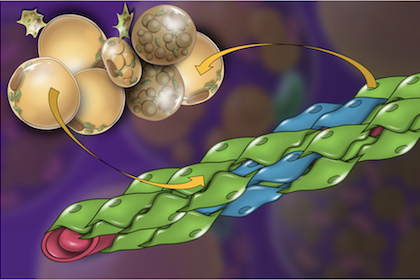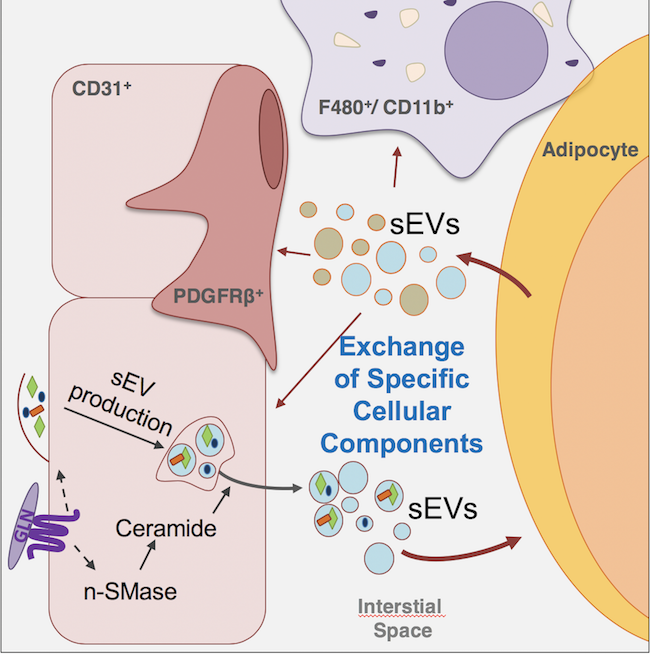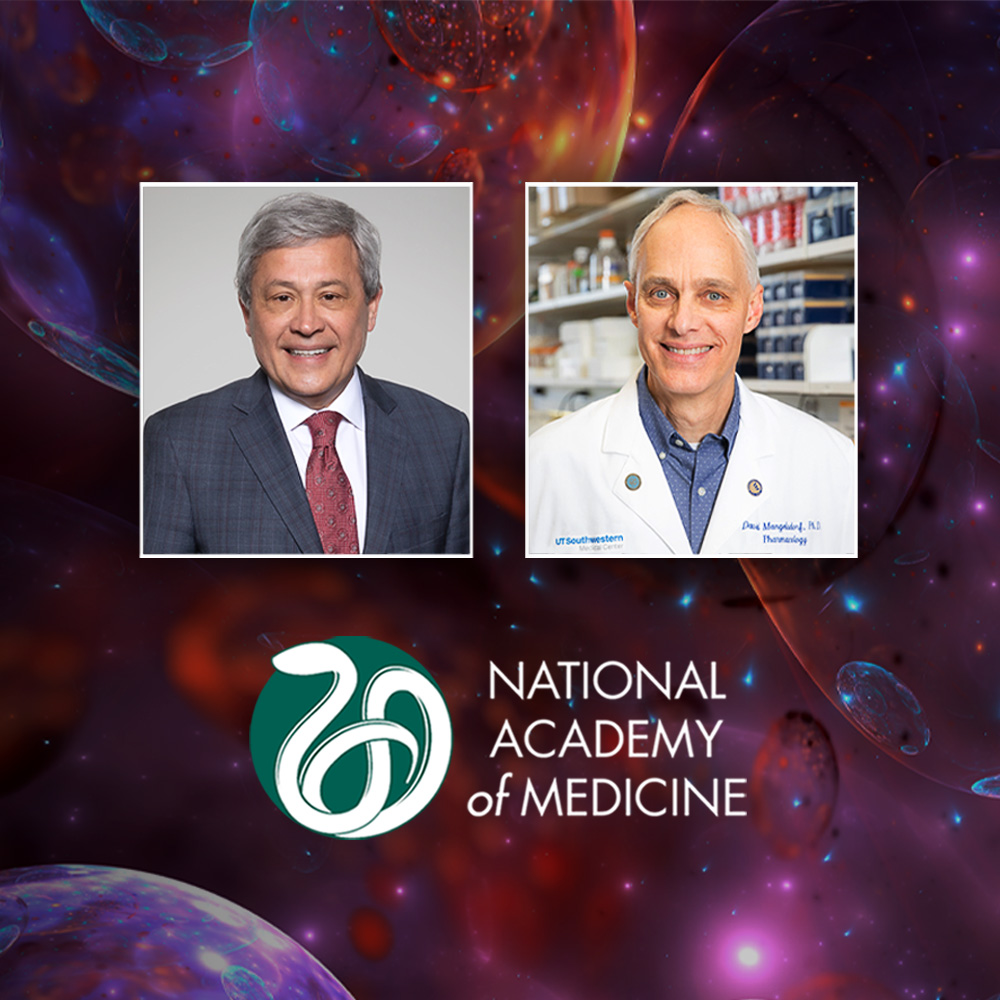Scientists tap into human cellular network: Eavesdropping on fat cells may hold solutions for diabetes
DALLAS – Oct. 4, 2018 – Researchers have long known that cells in the human body communicate with one another. Now a team of scientists at UT Southwestern Medical Center is hacking into this communication network to learn how fat cells talk with other cells and tissues in the body.

Dr. Philipp Scherer, a metabolism expert and Director of the Touchstone Center for Diabetes Research at UT Southwestern, is excited about the new findings because they will allow researchers to test new ideas and re-examine old ones.
The study, published in the journal Cell, shows that fat cells communicate with endothelial cells of the blood vessels that course through fat tissue, and potentially with other organs, by secreted packages of information. This communication between cells was demonstrated in a number of new mouse models that researchers created.
“These findings represent a new way of thinking for researchers who study diabetes, obesity, and metabolism. They open an entirely new door to our understanding of how tissues communicate,” said Dr. Clair Crewe, a postdoctoral researcher in the Touchstone Diabetes Center and first author of the study. “Once we understand the communication process, we can potentially shape it to either enhance or reduce the signaling effect.”

The study identified a type of vesicle, a membrane-enclosed sphere, released by fat and other cells. Dr. Scherer compares them to the chocolate surrounding a bonbon. The “filling” includes lipids, signaling molecules, and proteins. The timing of their release is regulated by cycles of fasting and feeding. These vesicles travel throughout the body. Their metabolic activity when they arrive at a destination can change the fate of the targeted tissue and result in either health or a disease, such as diabetes.
According to the Centers for Disease Control and Prevention, more than 100 million Americans are living with diabetes or prediabetes.
In previous studies, scientists learned that fat cells control the body’s metabolism by secreting intact signaling molecules. When fat cells are not working properly, the system starts to break down, causing problems with other tissues such as the heart and liver, said Dr. Scherer, Professor of Internal Medicine and Cell Biology at UT Southwestern.
In future research, the scientists hope to learn whether the vesicles discovered in this study could be directed to specific target tissues, such as the heart or liver. If so, they could be infused with a drug that would then be delivered directly to cells of the target tissues.

“Do fat cells stick a specific address label on these vesicles, which then delivers them to a specific location? If you’d like to deliver a treatment to a specific area, an address label would be a solution,” said Dr. Scherer, who emphasized the efficiency of the body’s delivery system. “It’s not like a carrier pigeon – it’s like FedEx.”
Dr. Scherer holds the Gifford O. Touchstone, Jr. and Randolph G. Touchstone Distinguished Chair in Diabetes Research.
Other UT Southwestern researchers who worked on the study include postdoctoral researchers Dr. Nolwenn Joffin, Dr. Joseph M. Rutkowski, and Dr. Min Kim; visiting scientist Dr. Fang Zhang; Dr. Dwight A. Towler, Professor of Internal Medicine; and Dr. Ruth Gordillo, Assistant Professor of Internal Medicine. Dr. Towler holds the J.D. and Maggie E. Wilson Distinguished Chair in Biomedical Research and the Louis V. Avioli Professorship in Mineral Metabolism Research.
The UT Southwestern study is funded by the National Institutes of Health. UT Southwestern is celebrating its 75th anniversary during 2018.
About UT Southwestern Medical Center
UT Southwestern, one of the premier academic medical centers in the nation, integrates pioneering biomedical research with exceptional clinical care and education. The institution’s faculty has received six Nobel Prizes, and includes 22 members of the National Academy of Sciences, 16 members of the National Academy of Medicine, and 15 Howard Hughes Medical Institute Investigators. The faculty of more than 2,700 is responsible for groundbreaking medical advances and is committed to translating science-driven research quickly to new clinical treatments. UT Southwestern physicians provide care in about 80 specialties to more than 105,000 hospitalized patients, nearly 370,000 emergency room cases, and oversee approximately 2.4 million outpatient visits a year.




